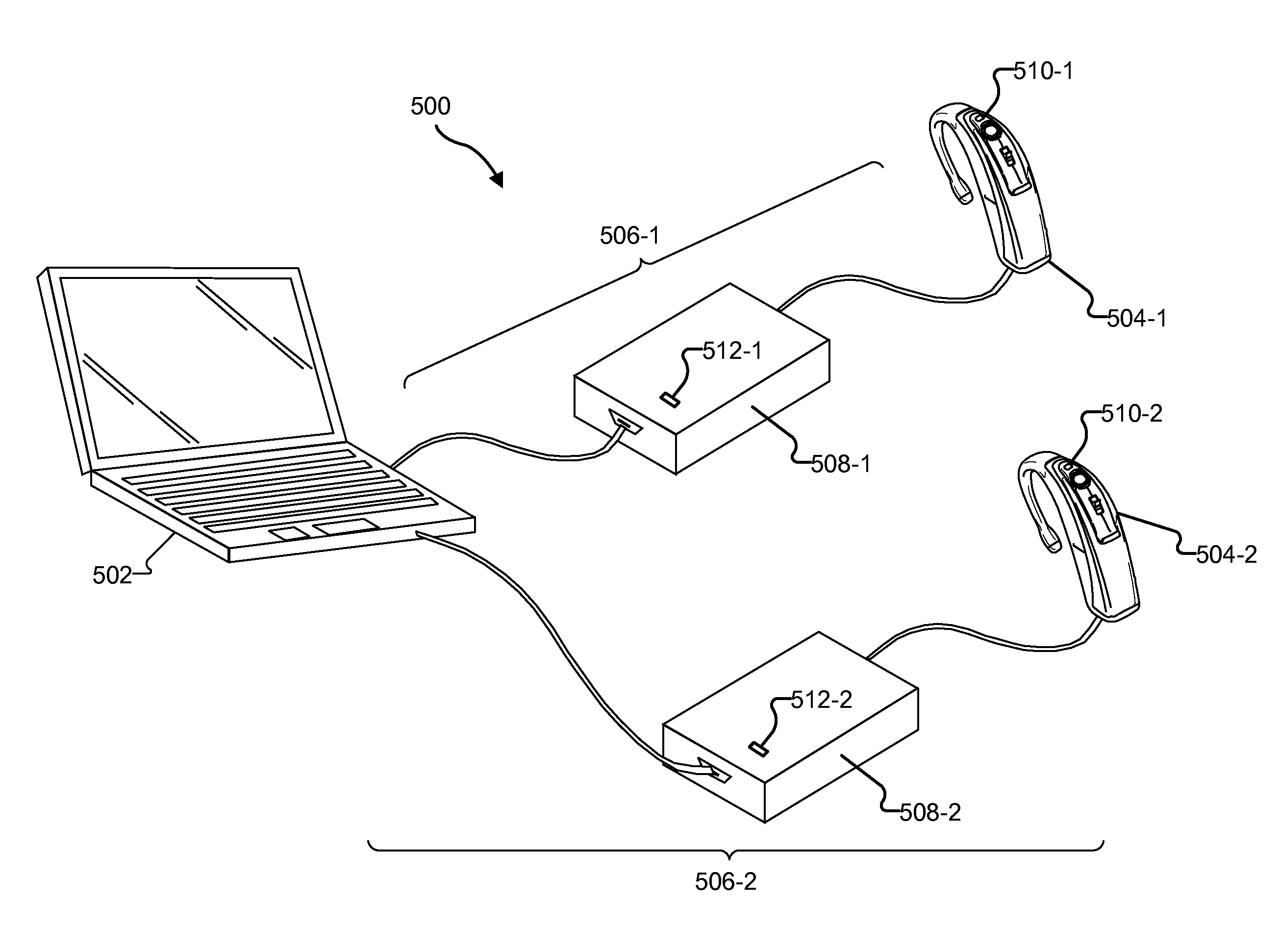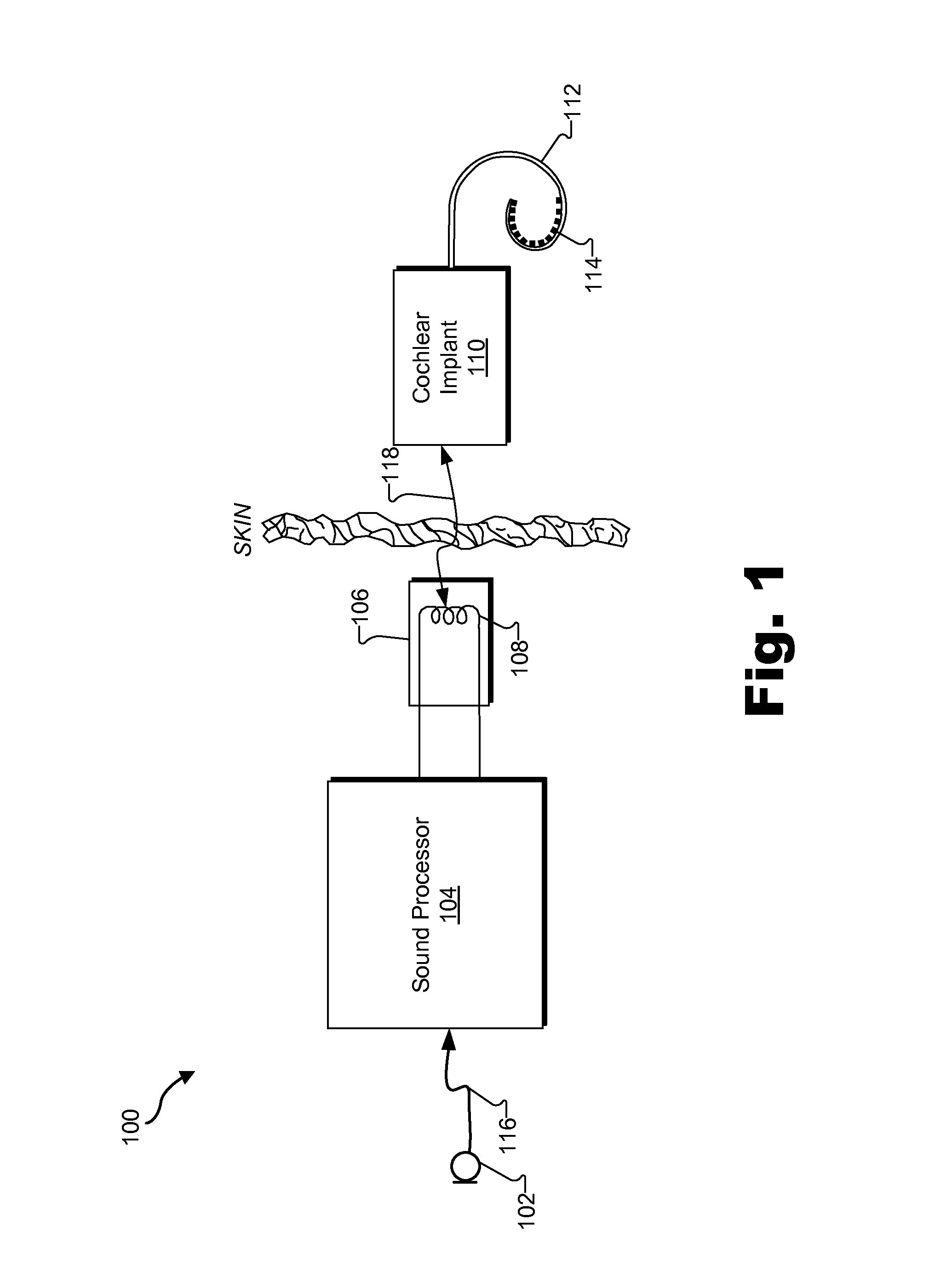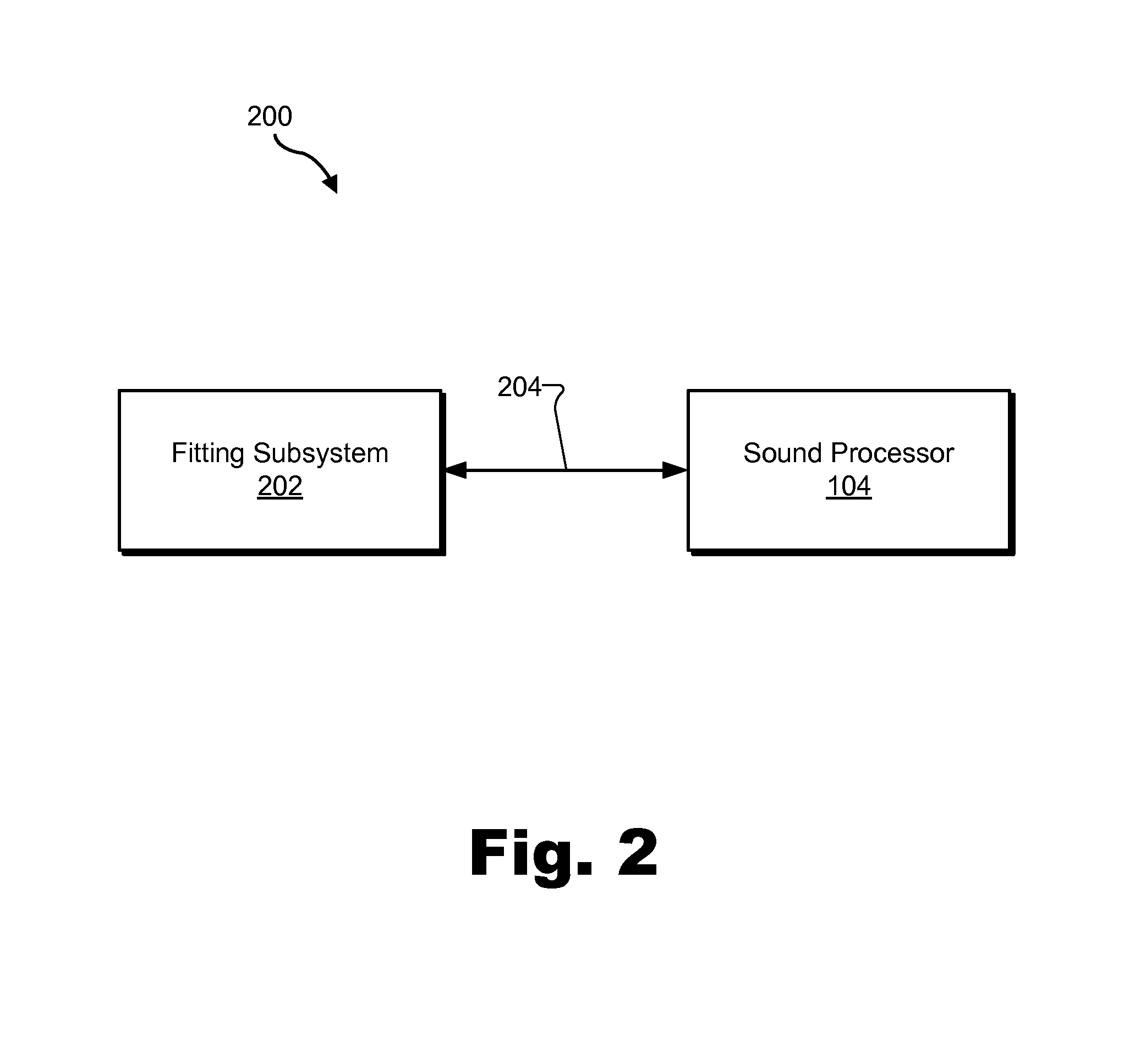Methods and systems for providing visual cues to assist in fitting a cochlear implant patient
a cochlear implant and visual cue technology, applied in the field of natural sense of hearing, can solve the problems of conductive hearing loss, impeded normal mechanical pathways for sound to reach the hair cells in the cochlea, and impeded sound pathways
- Summary
- Abstract
- Description
- Claims
- Application Information
AI Technical Summary
Benefits of technology
Problems solved by technology
Method used
Image
Examples
Embodiment Construction
[0024]Methods and systems for presenting visual cues to assist in fitting a cochlear implant patient are described herein. As described in more detail below, a fitting station may be configured to detect a user input associated with a sound processor communicatively coupled to the fitting station by way of a communication path. The fitting station may be further configured to transmit, by way of the communication path, a signal to the sound processor. The signal may be configured to direct the sound processor to display a visual cue.
[0025]As used herein, a “visual cue” refers to any visual indication that may be seen by a user of a fitting station used to fit a cochlear implant patient. A visual cue may include an illumination of a light emitting device (e.g., a light bulb, a light emitting diode (“LED”), a display screen, etc). In some examples, a visual cue may blink intermittently at a rate that is the same or different than another visual cue. In addition, visual cues may includ...
PUM
 Login to View More
Login to View More Abstract
Description
Claims
Application Information
 Login to View More
Login to View More - R&D
- Intellectual Property
- Life Sciences
- Materials
- Tech Scout
- Unparalleled Data Quality
- Higher Quality Content
- 60% Fewer Hallucinations
Browse by: Latest US Patents, China's latest patents, Technical Efficacy Thesaurus, Application Domain, Technology Topic, Popular Technical Reports.
© 2025 PatSnap. All rights reserved.Legal|Privacy policy|Modern Slavery Act Transparency Statement|Sitemap|About US| Contact US: help@patsnap.com



